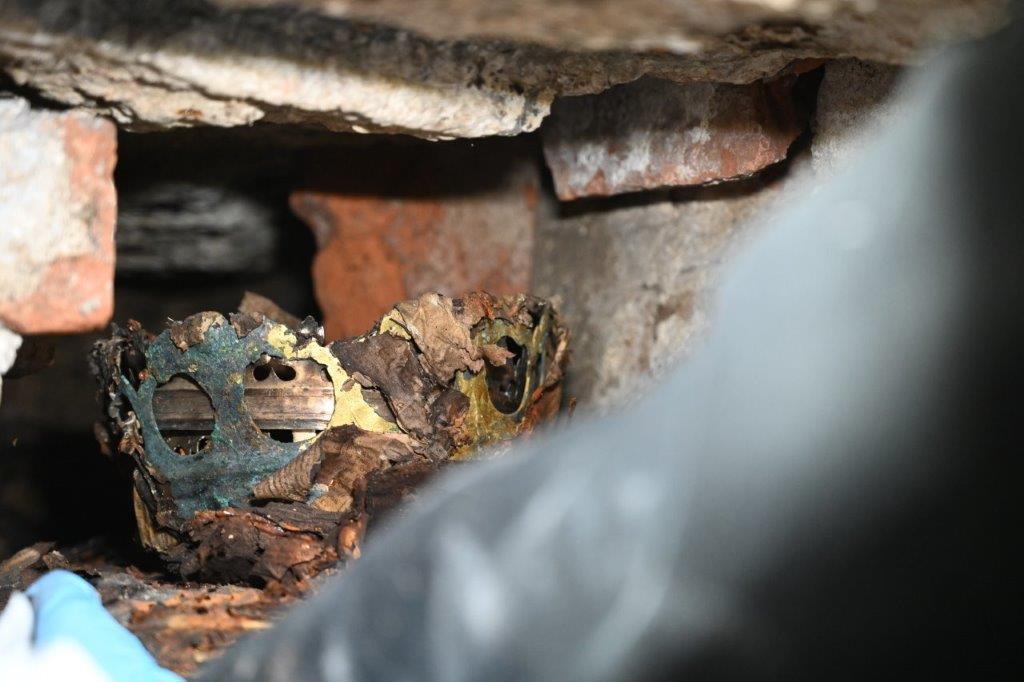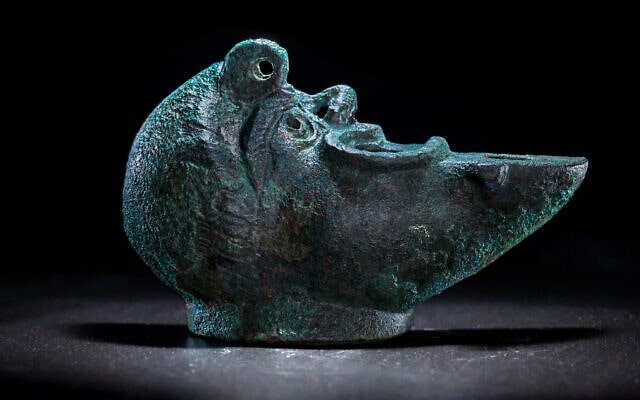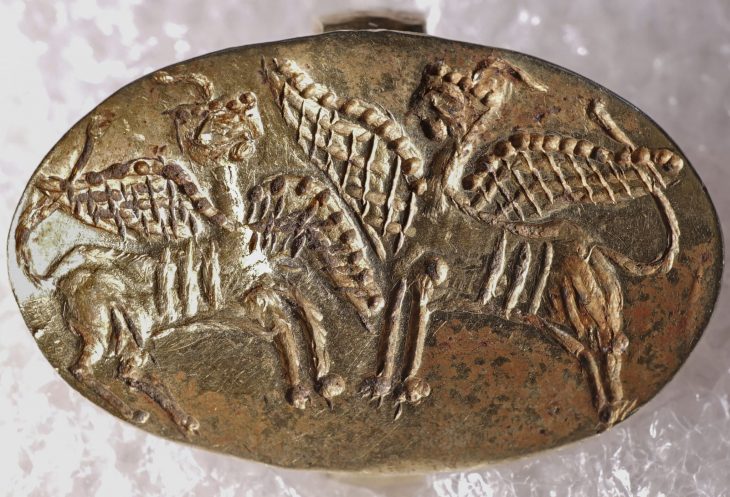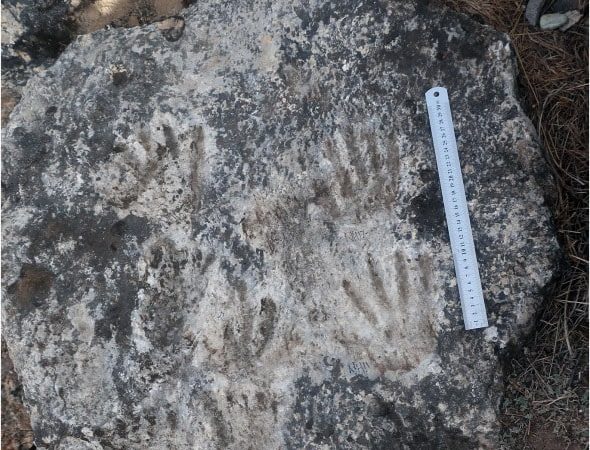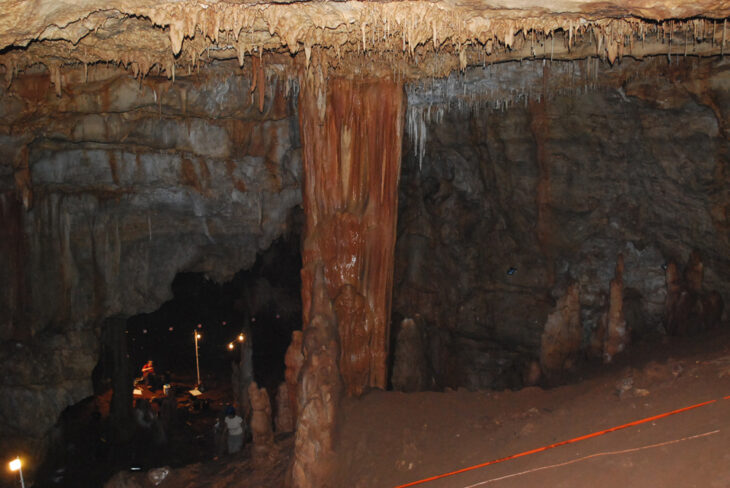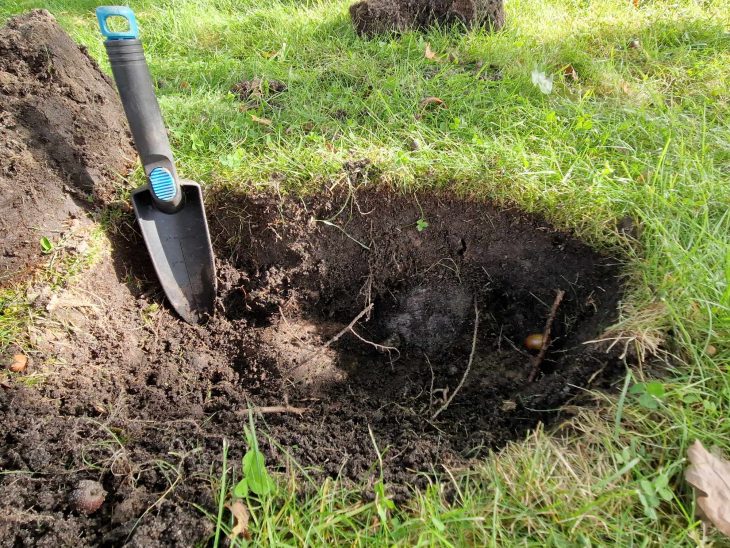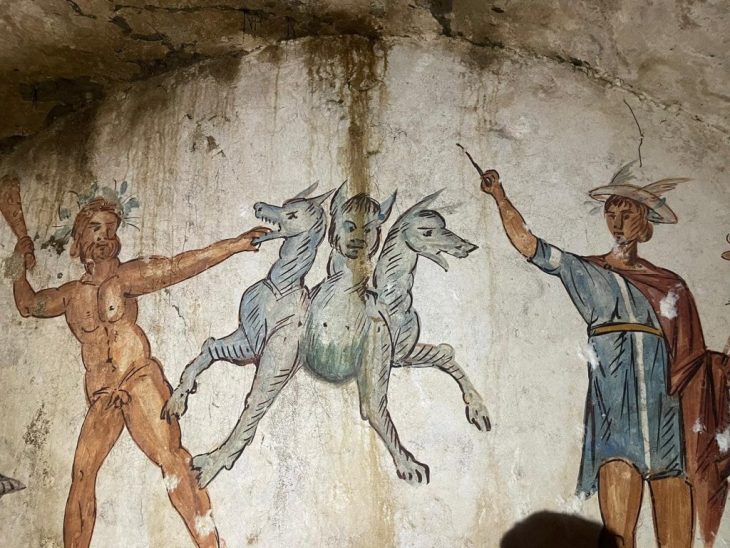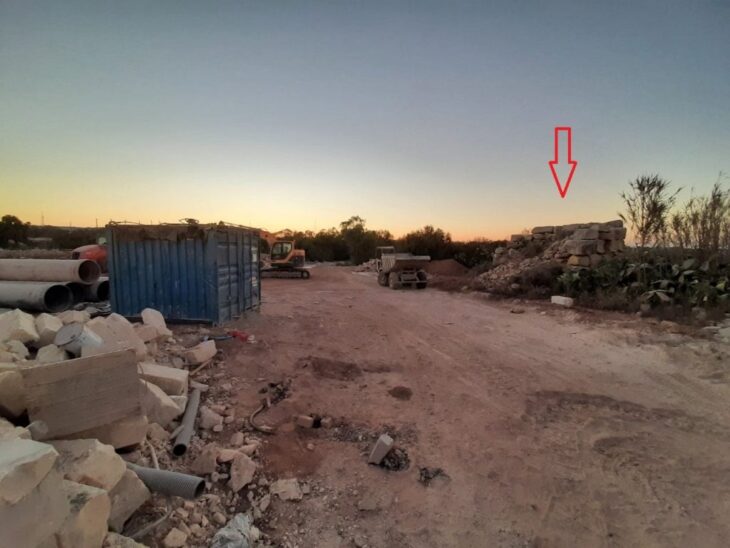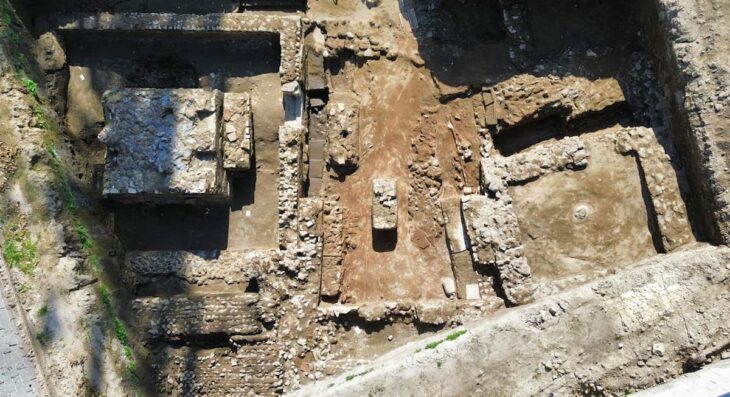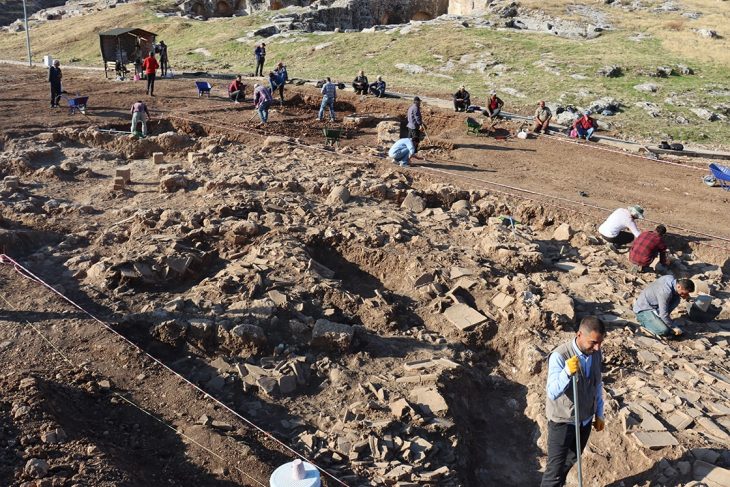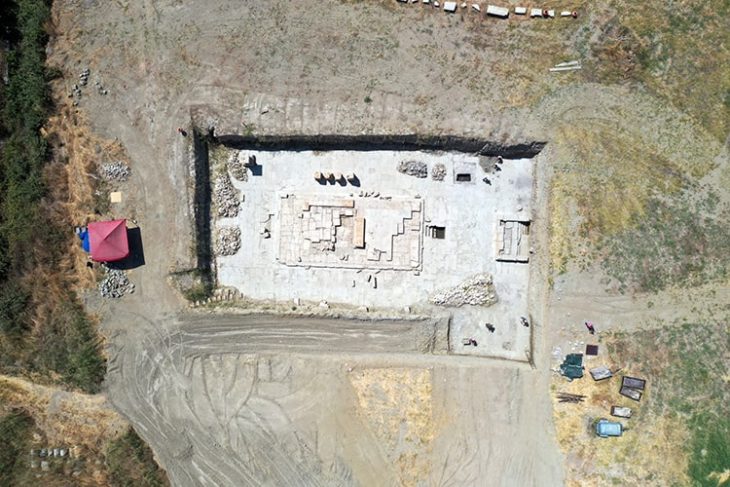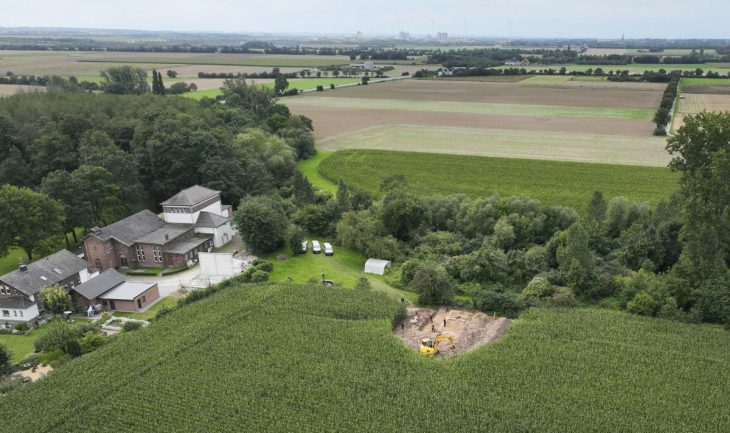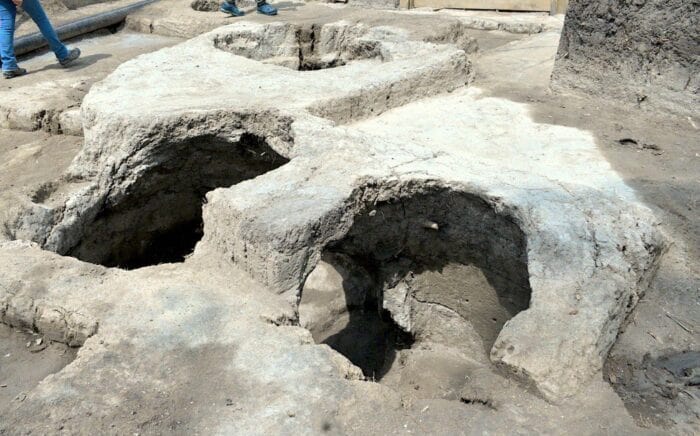A unique find was made in the dungeons of the Vilnius Cathedral: The royal funerals of the Polish and Lithuanian monarchs were discovered in the underground vaults of Vilnius Cathedral in Lithuania.
Found last month, the treasure includes crowns, scepters, orbs, and other regalia once intended for the tombs of 15th and 16th-century rulers.
A cache of Polish and Lithuanian royal treasures was buried in 1939, at the start of World War II. A scepter, crowns, medallions, rings, and plaques were hurriedly collected and placed in a crypt in the Vilnius Cathedral, where they would be concealed for almost nine decades.
Last December, researchers inspecting the cracks and cavities in the walls of the Lithuanian church’s vaults uncovered the handsome trove, bringing to light princely and historical artifacts that have survived centuries.
Presented to the public during a press conference earlier this week, the artifacts were described as “priceless treasures” by Archbishop Gintaras Grušas of the Vilnius Archdiocese. “These burial insignia of the monarchs of Lithuania and Poland are magnificent works of goldsmithing and jewelry. They symbolize a long-standing tradition of Lithuanian statehood and Vilnius’s role as a cultural and political center,” Grušas said.
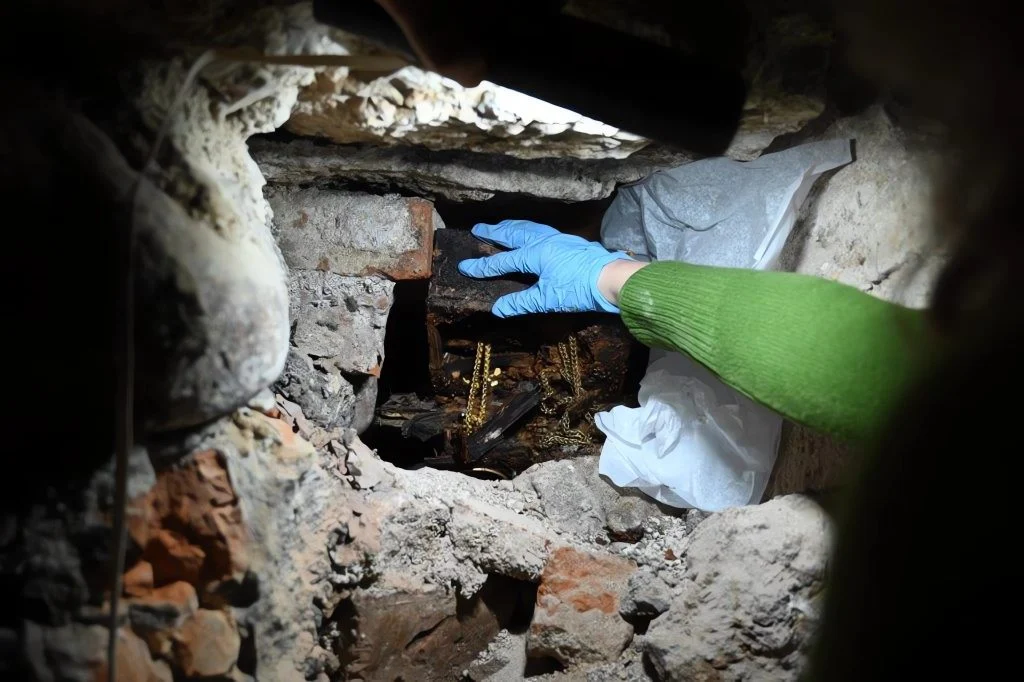
Vidmantas Bezaras, Director of Lithuania’s Department of Cultural Heritage (KPD), called the discovery “one of the greatest in the history of today’s heritage protection,” adding, “What generations of historians and heritage enthusiasts have dreamed of has now come true. This discovery enriches our understanding of Lithuania’s history, strengthens our sense of statehood, and allows us to present this remarkable history to visitors from around the world.”
The treasures in the stash bear the insignia of rulers including Alexander Jagiellon, King of Poland from 1501–06; and Elizabeth of Habsburg and Barbara Radziwiłł, the first and second wives of Sigismund Augustus, who reigned as king from 1548–72. Both kings were key members of the Jagiellon dynasty, which ushered in Poland’s golden age in the 16th century.
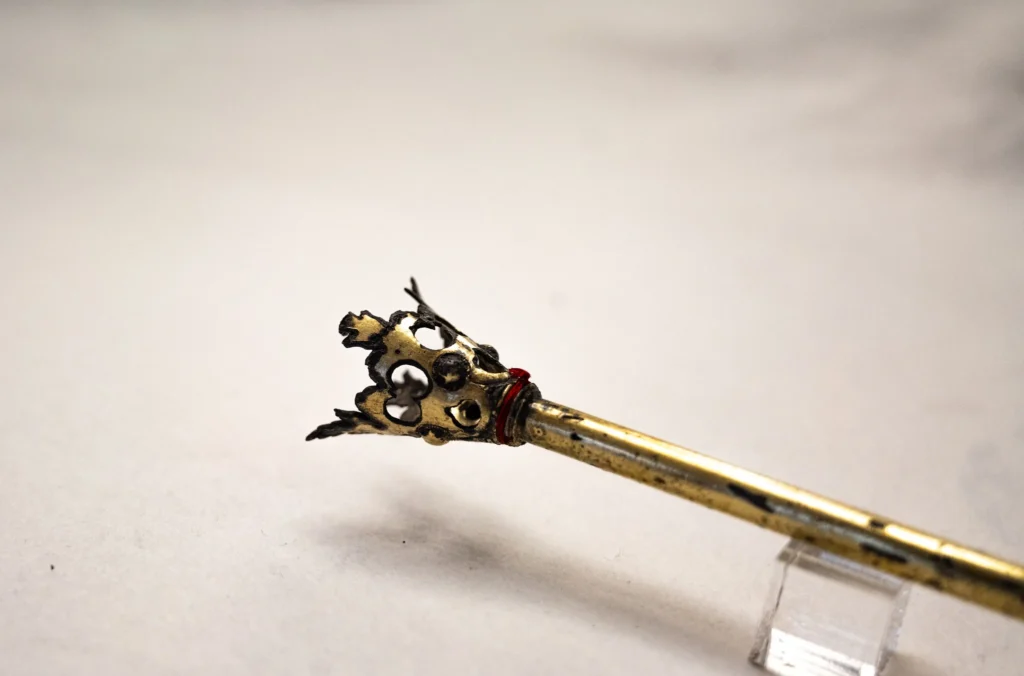
The crowns of the king, Elizabeth, and Barbara were among the hoard, as were a host of coffin plates and votive offerings, including rings, crosses, and bishops’ insignia.
According to the Vilnius Cathedral, the set of regalia was first discovered in its basement in 1931, when a flood revealed the burial chambers of the Grand Duke of Lithuania and King of Poland. In September 1939, the jewelry was collected in a newspaper and placed in a niche in the staircase when war threatened the structure. Time forgot its precise location, but its existence was never forgotten.
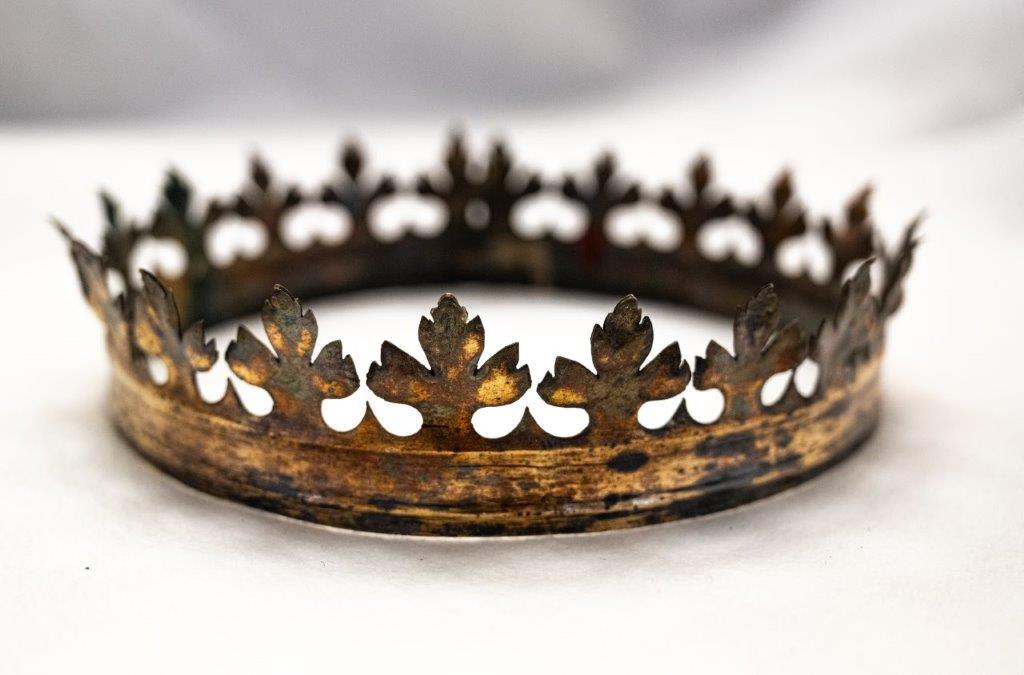
While the regalia required a little more effort, the treasury was rediscovered in 1985. Using non-invasive techniques like georadar, thermal imaging, metal detectors, and the testimony of a witness who was there when the regalia was hidden, the Vilnius Archdiocese hired experts to look for the location, but they were unable to find it. Unfortunately, funding was not secured for their 2023 plan to map the vaults in detail using a 3D scanner. Ultimately, an endoscopic camera was inserted through the walls’ pre-existing holes and cracks on December 16, 2024. The long-lost royal funerary regalia was finally captured on camera after multiple unsuccessful attempts. In order to document, catalog, and relocate the items to a safe location, the wall was taken down and the items were taken out.
Cover Image credit: Bažnytinio Paveldo Muziejus

